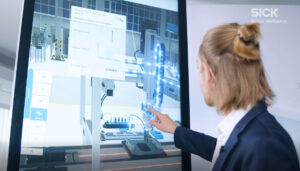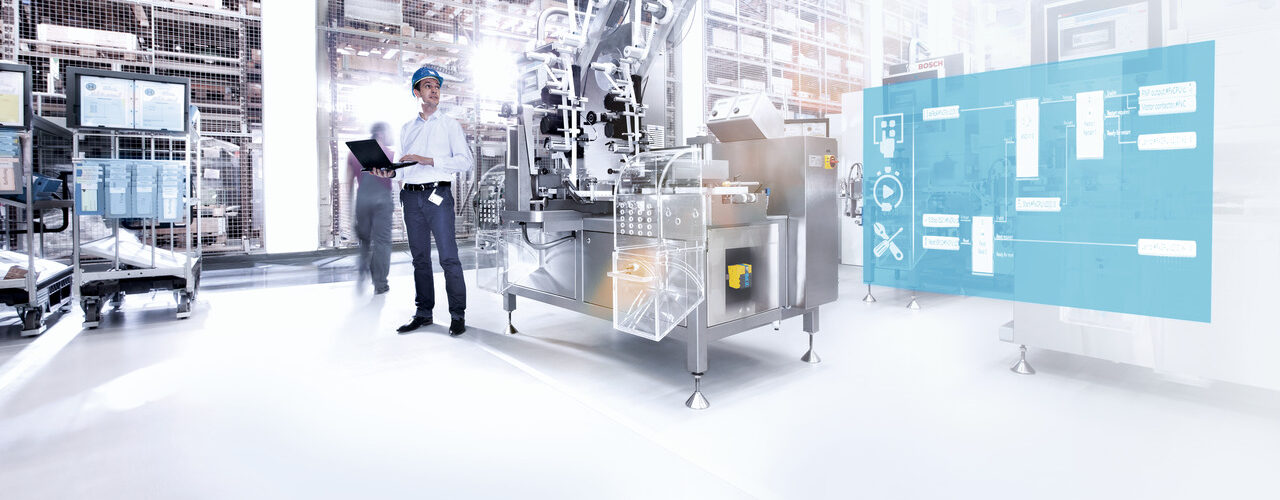Four phases to develop your data connectivity and integration process for digital transformation
An efficient and effectively run operation is the goal of any manufacturer. But to achieve this, you first need to have visibility to data from all your machines. This is where data connectivity and integration can help. It links disparate data sources into one central location to enable greater collaboration and better analysis. Access to data allows manufacturers to connect devices to networks and integrate the data together to provide effective analysis to support better decision making. This then leads to more efficient processes.
The path to data connectivity and integration can be intimidating, but SICK’s team of experts can help make this feel way less daunting. Our approach is four-pronged: data generation, data connectivity, data integration, and data analysis. Let’s take a deeper dive into each one!

Phase One: Data Generation
The first step is starting to generate the data to see how your processes are working or not working. This is often done by adding a sensor or similar device to your system that generates data from your processes and machines.
“There is a need in industry to change from being reactive to proactive. You can’t make informed decisions if you don’t have data to back up that decision,” said William Fisher, Digital Technical Consultant at SICK. “If you want to be more proactive, you need to start collecting relevant data.”
Many customers have spoken to Fisher about how they have little visibility to what is happening on their production lines. Manufacturers are unable to see how many products are being produced, when machines are running, and other critical information. The need to generate data provides greater visibility to what is going on behind the scenes in your operations and leads you to a place where you can make better decisions with data connectivity.
Phase Two: Data Connectivity

You’ve got the data you need, but how can you look at it all in one place? This takes us to the next step: data connectivity. You can’t do much with the data if you aren’t able to easily access it. The solution to this is connecting your devices to a network. Data connectivity is used to see how efficient the machines are operating and at what level of quality.
For example, gaining visibility to your hourly production rate allows you to better determine how to improve that number and add efficiencies into the process. The more data you have, the better you can determine the pain points in your process and what is limiting you from reaching your maximum capabilities.
In another example, a manufacturer had no visibility to what was happening on the line. Because of this, they often wouldn’t find out until later in day that they were behind schedule. Having real-time data showing what is happening in your facility helps you to make quick changes and be more agile in the day-to-day production schedule.

Phase Three: Data Integration
You’ve got your data and your machines are connected, but what do you do with that data? With the data integration phase, you can take that data and manipulate it to provide useful information points to improve processes. Typically, you would display this information and data on an human-machine interface (HMI) or dashboard. This allows you to see all the major areas of improvement needed.
As mentioned previously, looking at specific pain points from a data perspective allows manufacturers to be more agile and flexible and make quick changes to improve processes and operate more efficiently.
Another thing you may be questioning is if you have multiple different types of machines; can those all be connected? The short answer is yes, they can. Most machines in your facility can be used to generate data, even if it is a legacy machine or a brand-new machine.
Many manufacturers are already generating data from legacy machines, but they may not be doing anything with it. SICK experts can provide connectivity and integration services to make it more useful on legacy machines. Even injection molding, which are like legacy machines, that don’t do data generation can be manipulated to be connected.
Determining what pain points you need to fix is the key to data integration. You need to determine what you want the data to be used for so you can then move to the next step: data analysis.
Phase Four: Data Analysis
The final phase is to analyze all the data you’ve generated and integrated into your processes. Data analysis is the process of inspecting, cleansing, transforming, and modeling data with the goal of discovering useful information that informs thoughtful conclusions and supports intelligent decision making.
The data analysis phase is a major customer pain point because many do have the data and know what they want to see but aren’t sure how to interpret it. This is what really helps you embrace digital transformation and Industry 4.0. We all want to gain useful information from our processes in order to help make better decisions.
Once you know how to analyze the data, you can then make useful decisions that allow for the easy implementation of routine preventative and predictive maintenance. For example, a conveyor can monitor data on the motor and look at historical trends of its performance. Based on this, it can be determined when the motor is likely to fail and when it needs to be replaced. By knowing this ahead of time, downtime can be planned, and it won’t cause unexpected downtime and impact production.
SICK software solutions provide a dashboard for this exact situation. It takes captured data and creates a database to store it for production line monitoring. It is installed on your IT network or on a PC, depending on need.
Ultimately, that is the goal of data analysis: collecting data and turning it into useful information to support better decision making.
Want more information about data integration and connectivity?






